時 / 空的漣漪 - 文化資產的基型與變奏(製材所生活擴充案)
Ripples of spacetime
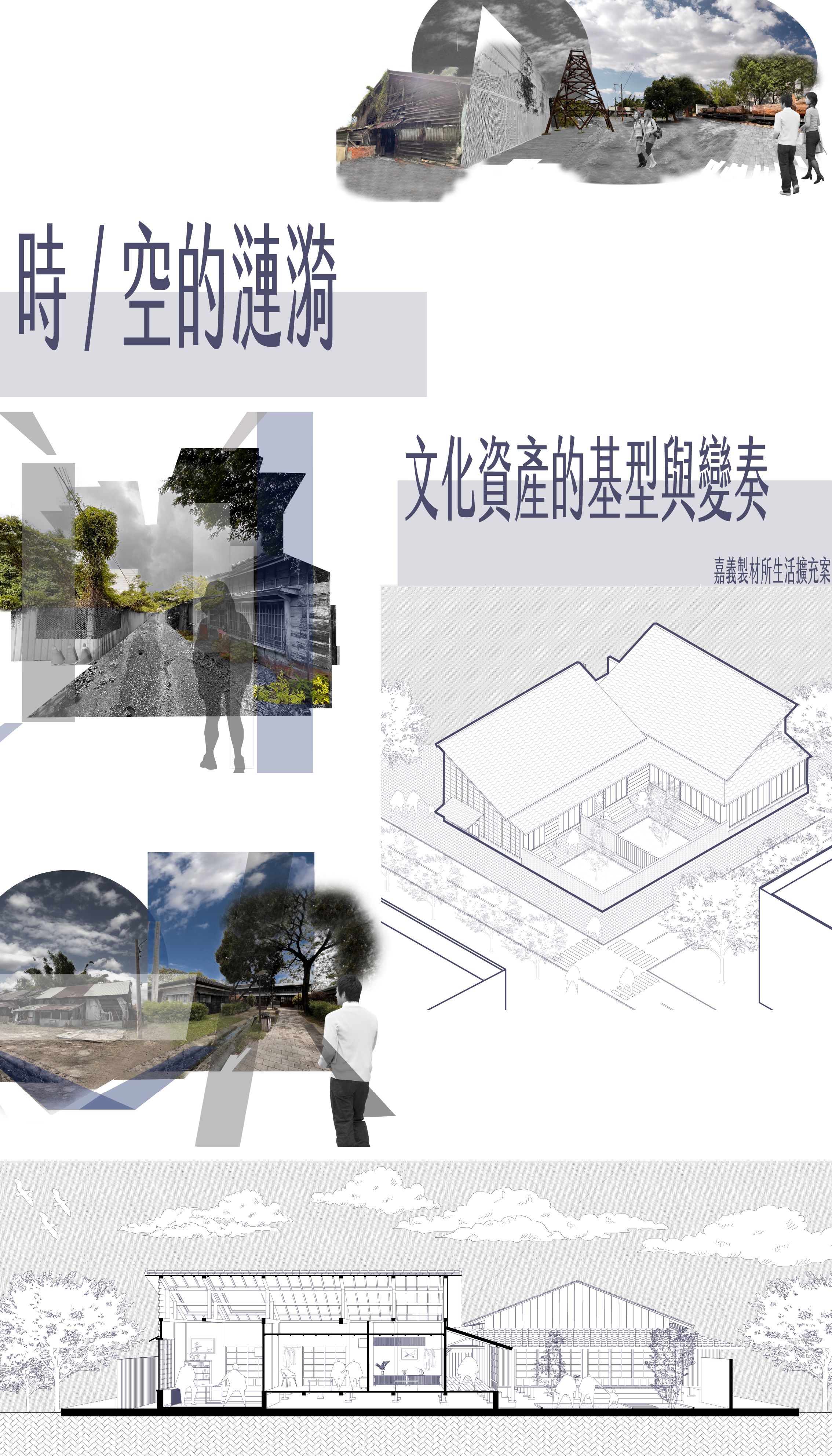
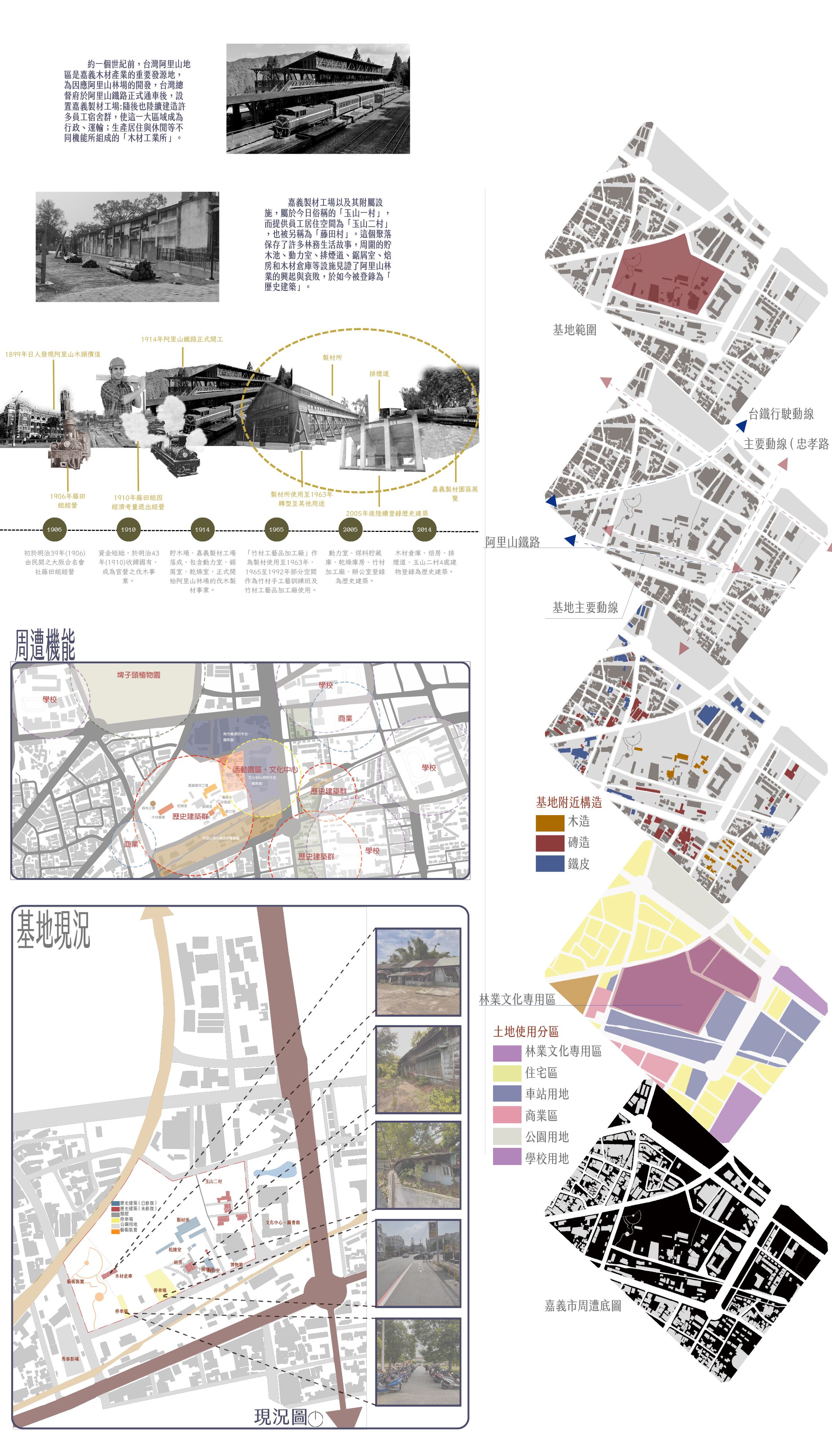
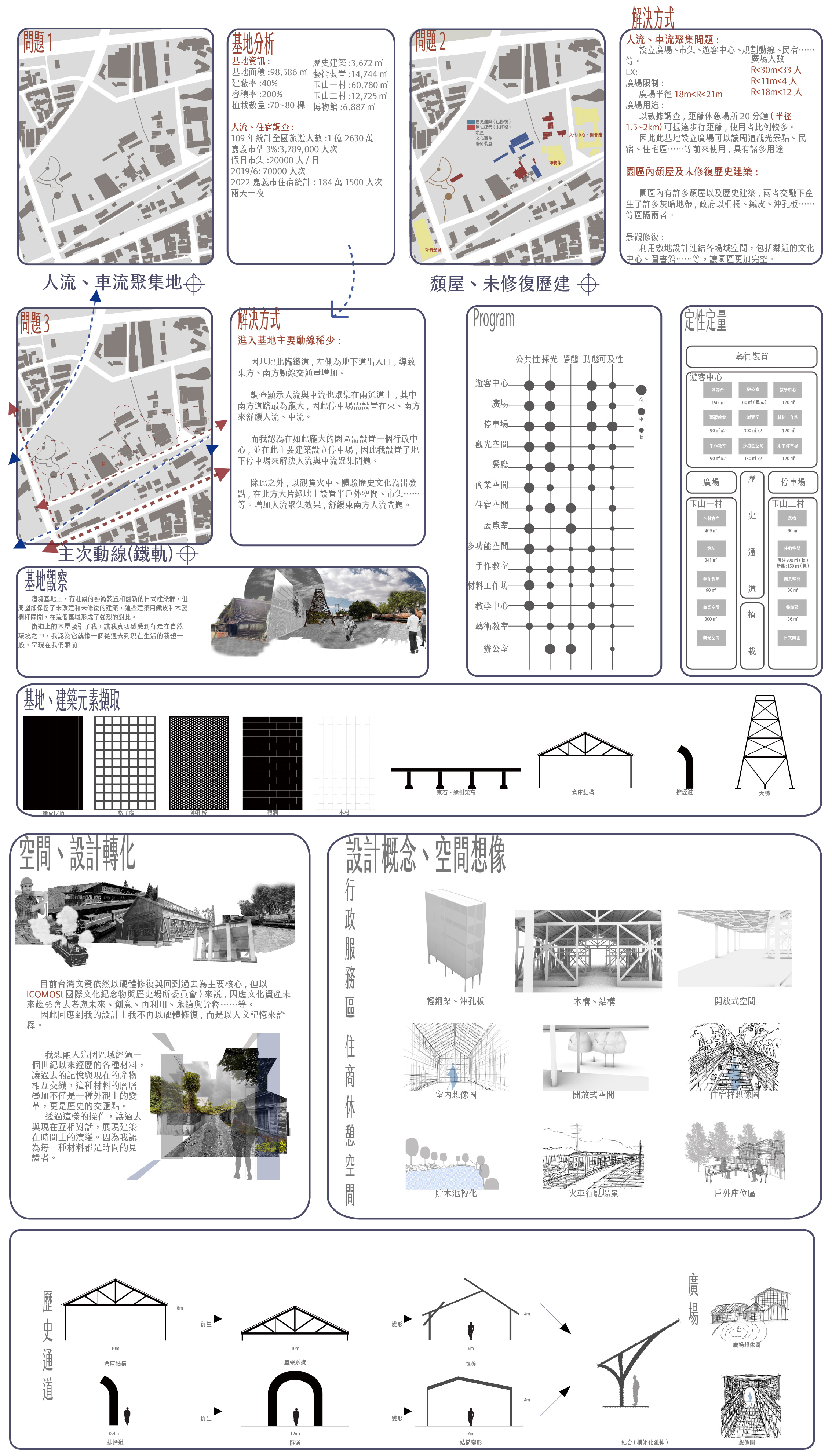
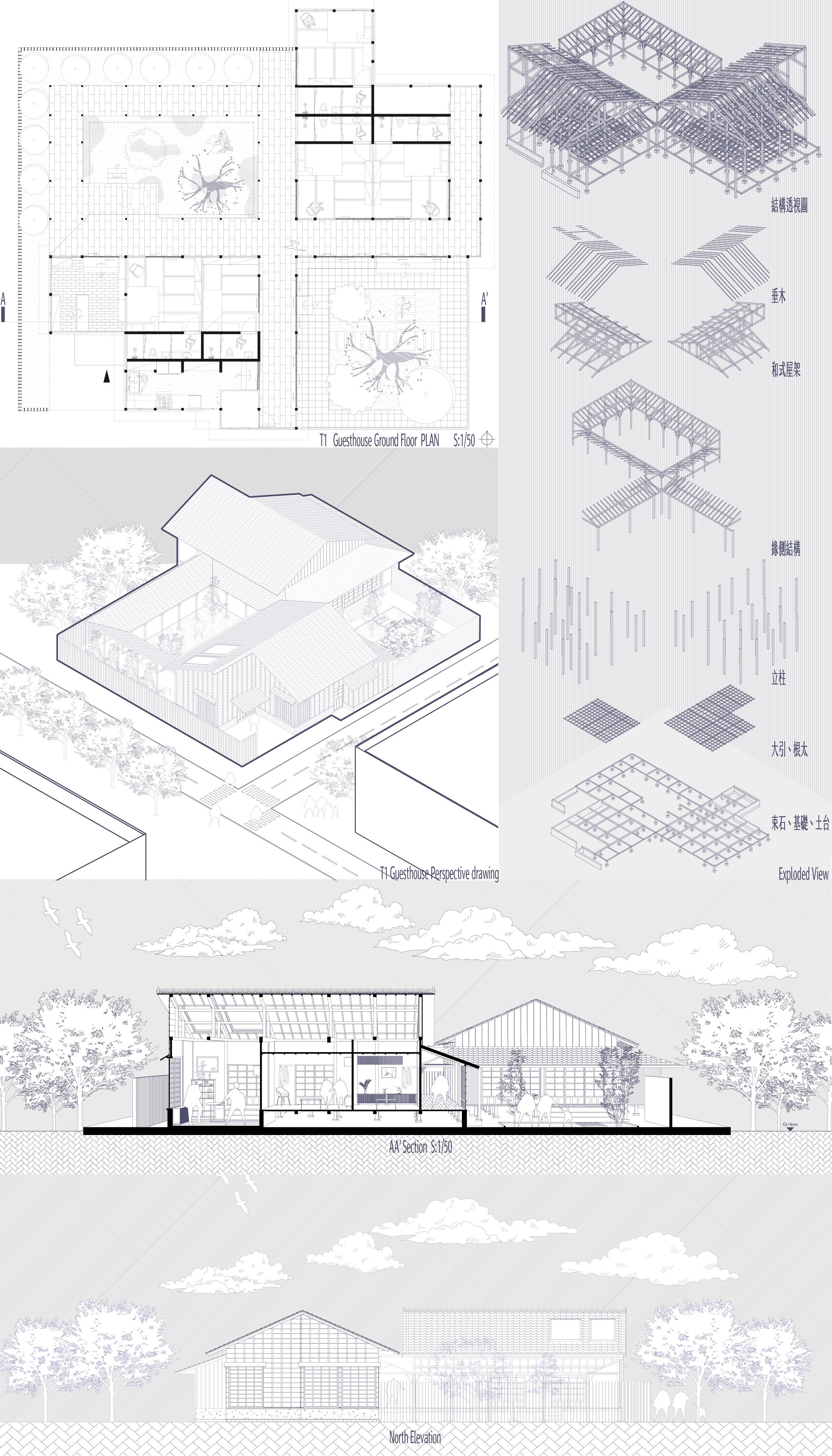
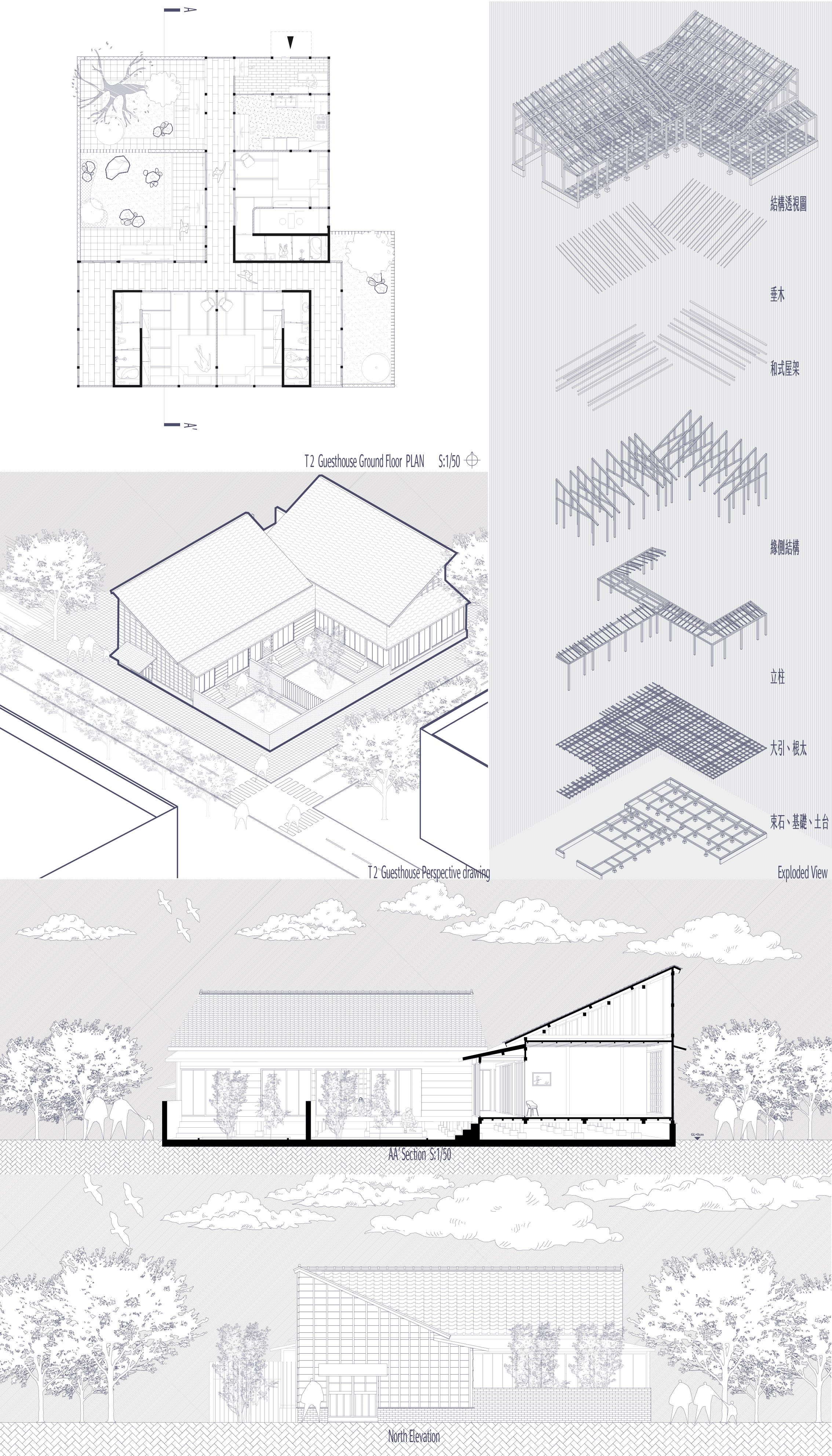
嘉義製材所,在經歷一百年後的現在,已然成為一個木業遺址,並發展成觀光景點,在時間的推移下現有的歷史建築已跟當初有所不同。
它有著另外一個別稱「玉山一二村」,玉山一村指的是製材所及其他加工設施,二村則為員工的生活場所,現況基地中,尚未修復的歷史建築為玉山一村的木材倉庫及排煙道,而二村則有四棟宿舍,編號為T1~T4。
在這塊充滿歷史、人文、交通的匯聚場所,充斥著嘉義人所擁有的懷舊情感,但走進這塊基地中卻感受到很大的衝突感,一邊規劃完好的製材所、手編工場、動力室,另一邊則是雜草、垃圾、鐵皮加蓋等等的場景,汙染了這片本應充滿歷史色彩的場所。
但在走訪基地當中,我也看到了不同於日式建築所出現的材料,在歷經一百年的時光洗禮下,這裡的日式建築也有了屬於不只是日本傳統建築的味道,所以我想重現當時木製所的繁榮,但並不是以完整修復為目的,而根據這塊基地以及周遭機能的分析、需求等等,利用舊有元素的增建、改建、新建,滿足周遭居民、旅客、環境所能提供的需求。
因此主要設計的三大方向為提供住宿需求的民宿、緩解假日所帶來人潮市集以及融合已修復和未修復建築之間的景觀關係,使玉山一二村能以現代人所需要的機能來重現嘉義人的舊有記憶,且讓前來此地的遊客能更想前來參觀木都之美。
Ripples of spacetime
The Chiayi Lumber Mill, after a century of existence, has transformed into a relic of the timber industry, now developed into a tourist attraction. Over time, the existing historical buildings have evolved from their original state.
It is also known by another name, "Yushan One Two Village." Yushan One Village refers to the lumber mill and other processing facilities, while Two Village was the living quarters for employees. Among the current state of the site, the unrestored historical buildings include the timber warehouse and smokestack of Yushan One Village, while Two Village consists of four dormitories, labeled T1 to T4.
In this convergence of history, culture, and transportation, there is a nostalgic sentiment held by the people of Chiayi. However, stepping into this site reveals a significant clash: on one side, meticulously planned lumber mills, handcraft workshops, and power rooms, while on the other, scenes of weeds, trash, tin shacks, and other elements that tarnish the historical ambiance.
During my visit to the site, I also noticed materials different from typical Japanese architecture. After enduring a century of weathering, these Japanese-style buildings have acquired a taste not only of traditional Japanese architecture but also a unique flavor.
However, the goal is not solely focused on complete restoration. Instead, based on analysis of the site and surrounding functionalities, needs, etc., utilizing existing elements for extensions, renovations, and new constructions to meet the demands of the surrounding residents, tourists, and environment.
Therefore, the main design focuses on three major directions: providing accommodation through guesthouses to meet lodging demands, hosting markets to alleviate holiday crowds, and integrating the landscape relationship between restored and unrestored buildings. This aims to recreate the nostalgic memories of Jiayi residents with modern functionalities at Yushan One Two Village, while enticing visitors to appreciate the beauty of the "Wood Capital" even more.
國立金門大學 建築學系
(五年級) 指導老師 郭芷瑜
藍文佶